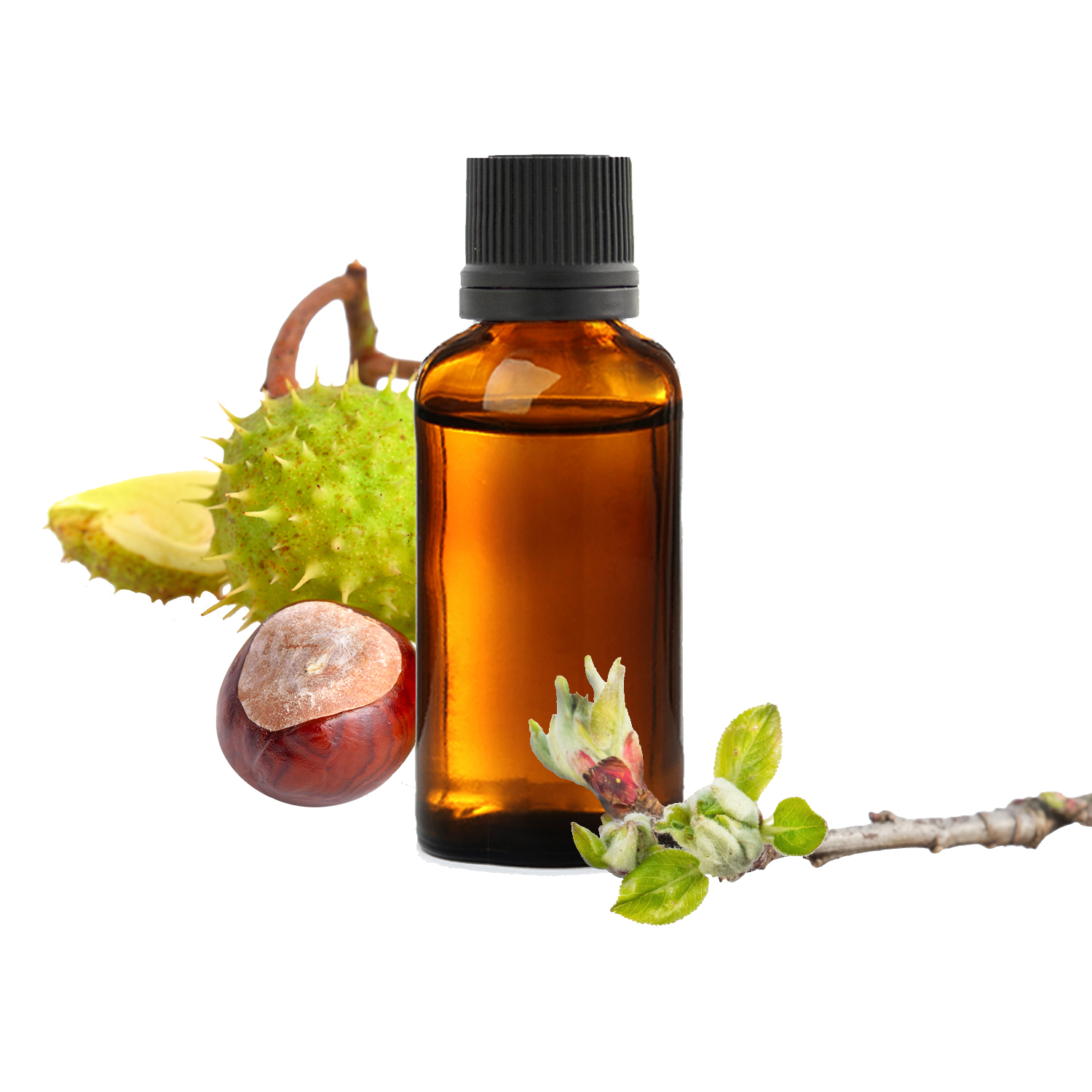
The horse chestnut, or horse chestnut in reference to the Turkish horses which were cared for by chestnuts, is a tree whose fruits produced in autumn are toxic to humans when fresh. The chestnut bud has perfect digestive tolerance, and it will be used effectively to promote good circulation in all circulatory disorders. Particularly suitable for the treatment of hemorrhoids, this decongestant also has other respiratory and cutaneous indications. Chestnut bud macerate will be very suitable for situations: hemorrhoids, varicose veins and pulmonary emphysema. Latin name: Aesculus hippocastanum. Part used: Fresh buds
This article was updated on 19/07/2023For what problems should it be used?
-
Blood and lymphatic system ++++ : Varicose ulcer, Hemorrhoids, Heavy legs, Phlebitis, Raynaud's syndrome, Thrombosis (prevention), Varicose veins
-
Cutaneous system +++ : Rosacea
-
Immune and respiratory system +++ : Dyspnea, Pulmonary emphysema
-
Urogenital system ++ : Dysmenorrhea, Metrorrhagia, Prostatitis, Painful periods
How to use it alone?
Adults and adolescents : 5 to 15 drops per day in a glass of water, divided into 1 to 3 doses during the day depending on the case, 15 minutes before a meal for 3 weeks. Start with 5 drops and increase gradually:
- or one drop per day up to 15,
- i.e. 5 drops the first week, 10 the second and 15 the last.
Children over 3 years old : 1 drop per day for 10 kilos. Start with 1 drop and gradually increase.
Synergistic uses
Hemorrhoids
The Chestnut tree can be associated with Chestnut and at Mountain ash in case of hemorrhoids to improve blood and lymphatic circulation, tone and fluidify it.
Heavy legs
To act on heavy legs, you need to relieve congestion and promote better circulation. For this, the macerate of chestnut buds can be combined with the macerate of buds of Chestnut.
Varicose veins
Chestnut bud macerate can be combined with bud macerates of Chestnut and of Mountain ash, with circulatory, anti-inflammatory and venous tonic properties.
Rosacea
It may be interesting to associate the Chestnut tree with Ginkgo biloba and at Walnut in case of rosacea. One is specific to the microcirculation and the other is hepatic and blood draining.
Asthma
In case of asthma, Chestnut bud macerate can be used in combination with Chestnut bud macerate. Hazel, draining and regenerating lungs.
Dysmenorrhea
For its decongestant action in the pelvic region, chestnut bud macerate can be used. It can be associated with Raspberry bush to act on hormonal rebalancing.
Main properties
-
venous decongestant, vasoconstrictor, venous tonic :
the Horse Chestnut is widely known for its action on blood circulation, and it is not its buds that will prove the opposite. Its bud macerate has many beneficial properties on venous circulation. It is venous decongestant, slightly thins the blood, tones the vein wall, increases the resistance of blood capillaries and reduces their permeability. It exerts a vasoconstrictor action, mainly due to the presence of esculoside. It thus limits the formation of thromboses. Finally, it exerts a secondary action on the respiratory tissue which it decongests. Although its action is quite specific to the lower limbs, it facilitates circulation throughout the body and reduces pulmonary, pelvic and prostate stasis.
Precautions for use
- Chestnut bud macerate is a herbal food supplement. It does not replace a varied diet and a healthy lifestyle. It is important to keep it out of the reach of children and not to exceed the recommended daily dose. Dosages must be adapted for young children.
- Chestnut bud macerate is authorized for the whole family, except for babies under 3 years old and pregnant women.
- Not recommended for people under anti coagulants.
- Store away from light and heat.
What does a good Chestnut bud macerate look like?
Botanical characteristics
- Latin name: Aesculus hippocastanum L.
- Botanical family: Sapindaceae
- Distilled part: fresh buds
Composition
- Composition: Alcohol* 32%, Water, Vegetable Glycerin*, Chestnut bud extract (Aesculus hippocastanum L.)*.
Organoleptic characteristics
- Appearance: liquid - possible cloudiness
- Color: reddish brown
- Odor: woody, slightly alcoholic.
- Taste: bitter, alcoholic, woody.
Was this article helpful to you?
Average grade: 4.8 ( 184 votes)
Bibliography
Work : Piterà di Clima, F., & Nicoletti, M. (2018). Summary of gemmotherapy - Scientific foundations of Meristemotherapy. Amyris Editions.
Work : Boistard, S. (2016). Gemmotherapy - Buds for health - Practical and family guide. Terran Publishing.
Work : Andrianne, P. (2011). Treatise on gemmotherapy: Therapy using buds. Amyris Editions.
Work : Halfon, R. (2011). Gemmotherapy - Health through buds. Dangles Editions.
Work : Ledoux, F., & Guéniot, G. (2014). Phytembryotherapy: The embryo of gemmotherapy. Amyris Editions.
Work : Pineau, L. (2019). The great book of gemmotherapy. Leduc.s Éditions.


